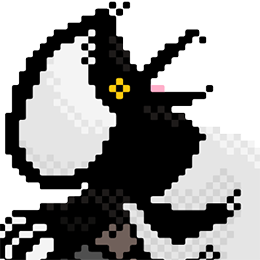Spend a moment the next time you’re outside to stop and take in what’s around you: the sights, the sounds, from the ground to the sky. There is a likely a wild (pun intended) diversity of life around you just on the street you live. Notice the trees, “weeds,” flowers, insects, birds, mammals and everything in between.
If you’re curious to learn about the flora and fauna of the world you see, there are two fun, accessible smartphone apps that make it super easy.
Seek
This app is a joint initiative by the California Academy of Sciences and the National Geographic Society. It uses astonishingly accurate image recognition to ID mammals, reptiles, amphibians, fish, birds, plants, trees, fungi, and more in real time with your phone camera. Just point it at your subject and it will start analyzing.
There are fun monthly challenges in the app to earn badges and all of the data is stored locally on your device only unless you choose to share it elsewhere.
Merlin
This app is a product of the Cornell Lab of Ornithology and is like ‘Shazam’ for birds. It can listen using your phone’s microphone and ID the birds it hears in real time. They’ll pop up in the list and flash as they’re detected. As a big time birdwatcher, this app is extremely helpful in the field.
You can also upload a photo and it will ID from the picture, or answer a short series of questions to get suggestions of what you may have spotted.
Taking it a bit further
If you like lists, data, and a sense of achievement, both of these apps have more robust counterparts that give you even more opportunities to learn and reflect.
iNaturalist
Observations from Seek can be submitted to your iNaturalist.org account. Doing this will allow other users to agree with your ID or suggest one if the app couldn’t identify the species. Their website lets you browse observations from all over the world and you can suggest IDs for other people’s uploads. You’ll get to see your entire record of observations and media making it really fun to look back on.
eBird
Any birds you discover with Merlin can be submitted to eBird.org which will enable you to start building a life list of every bird you’ve seen. The checklists you submit can include photo and audio recordings as well as any notes you’d like. eBird can be used to find local bird ‘Hotspots’ as well as what birds have been reported around you.
Citizen science
Both of these projects are critically-important, crowdsourced citizen science projects that give researchers invaluable information that helps them study the impact of climate change and for all sorts of other great purposes.
Merlin is great though you really have to take the results with a grain of salt at times. I’ve had it identify part of a Song Thrushes singing as an Oystercatcher, for example. But the majority of IDs are generally correct.
These all seem to be US-developed. Does anyone know which one(s) should work best for other countries?
A more European-focused alternative is ObsIdentify. Its image recognition for flora and fauna works especially well in the Netherlands and Belgium, for which it was originally developed, but it should work in the rest of Europe as well.
FWIW, eBird is used extensively internationally. There are some equivalents specific to certain countries but I don’t know what they are. Merlin relies on being trained from user uploaded recordings posted to Macaulay Library, via eBird, so the more people participate the better it becomes.
I’ve used Seek and iNat in Europe and it worked really well still.
Great post! These are all such amazing resources, and with iNat and eBird, you can A) contribute to science B) learn so much yourself from the observations you make C) have the chance to find something new, whether it’s something you’ve never seen before, or something that isn’t usual for that area
eBird is a lot of fun. Whenever people ask me why I do it, I tell them it’s like collecting / catching all the different Pokémon, they usually understand then. Just that doing this is actually very helpful for science!



